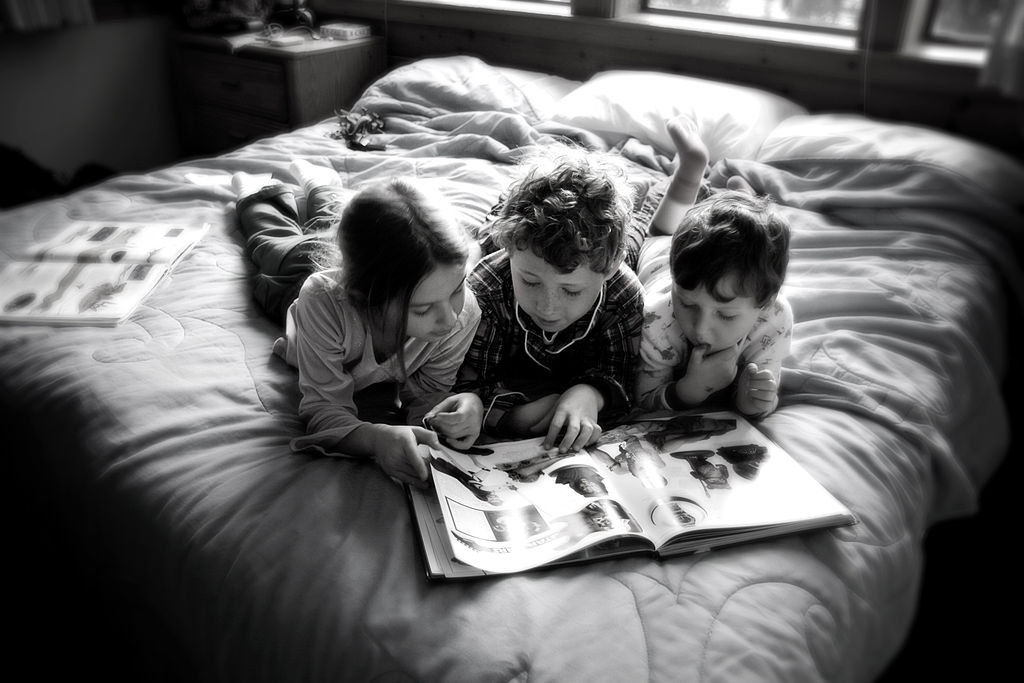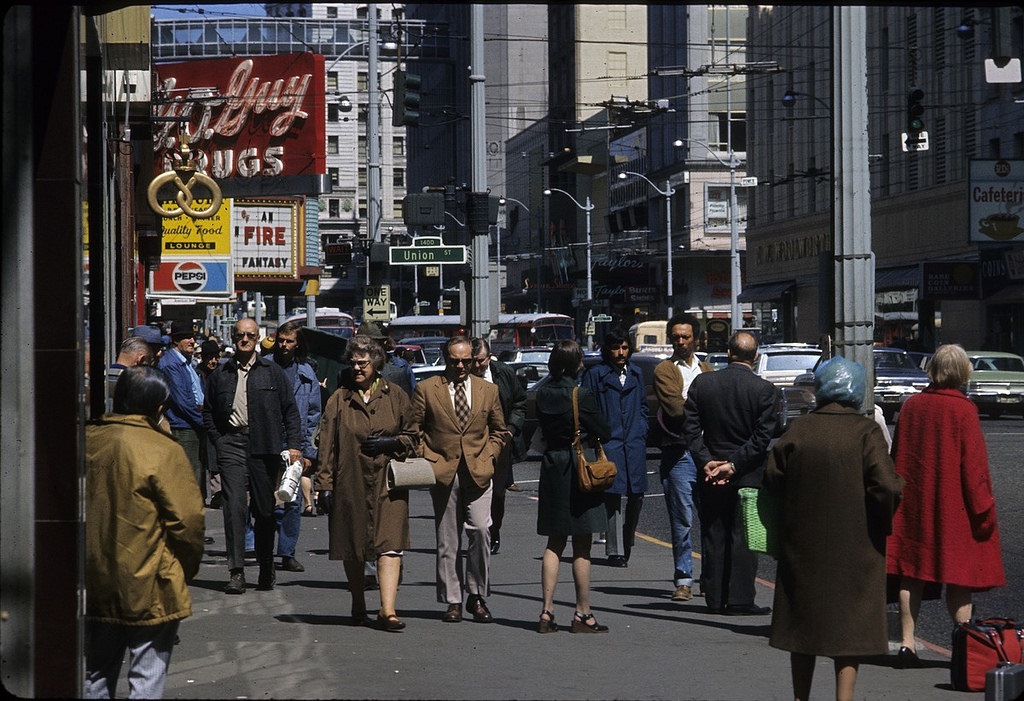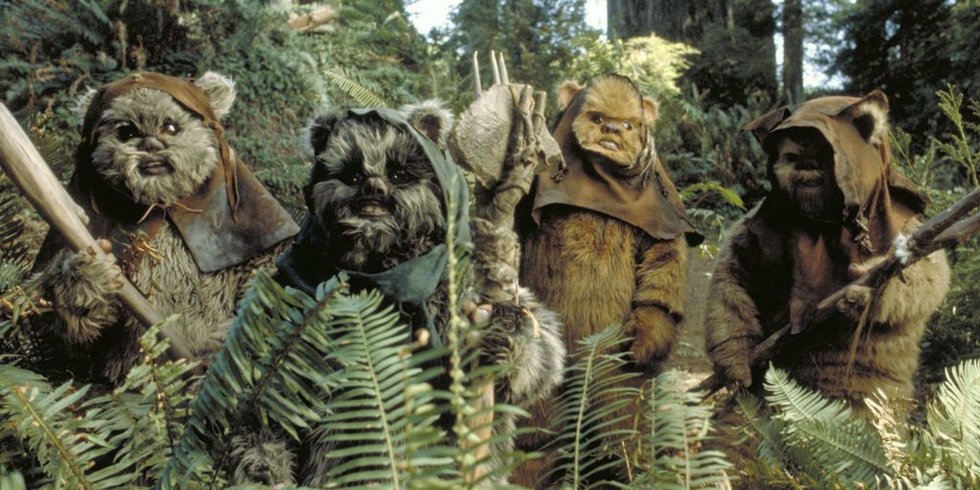There is no more passionate and vocal group of fans than those who live with and love Star Wars, a space opera from the 1970s that spawned a global phenomenon.
There are few things in culture, specifically American culture, that are universal. Even rarer still, are the things that are universal in American culture than you can trace back to its origin. For those of us who’ve lived through the past four decades, we’ve all been able to watch it happen thanks to a funny little space movie dreamed up by a young filmmaker named George Lucas. From there, the impact of Star Wars only evolved.
Even if you’ve never seen a single second of a Star Wars movie or cartoon, you’ve still encountered it. Bits of these films have found their way into everyday life. A politician who tells a blatant untruth before a camera might be accused of trying a “Jedi mind trick.” A looming figure, especially one with a deep voice or a breathing problem, could be called “Darth Vader” or a “Sith Lord.” The impact of Star Wars is everywhere.
As mentioned above, this was not always the case. Lucas, while trying to get his movie made, was told he was foolish for even trying. Still, with a little help from a sympathetic studio executive and his then-wife, he proved them all wrong. More than 40 years later, Star Wars is bigger than ever. People don’t just enjoy these stories as movies or cartoons. No, some build their whole lives and identities around the impact of Star Wars on their lives. Around the world hundreds of thousands of people state their religion as “Jedi.” A tax exempt Temple of the Jedi Order is registered in Texas, while the Church of Jediism established itself across the pond in Britain. How did this happen?
The Impact of Star Wars Began a Long, Long Time Ago…in the 1970s…
Before the impact of Star Wars began, the world was a tumultuous place in the late 1960s and early 1970s, particularly in America. The fight for civil rights and against the Vietnam War made the country feel less like the land of the free and more like an “evil empire.” When in the mid-1970s President Richard Nixon resigned in scandal, it seemed confirmation that the villains were in power.
Meanwhile, economically, people struggled to find work and make ends meet. Crime was high, and cities seemed powerless or unwilling to do anything about it. The cinema of the time reflected this malaise. The stories were about heroes or anti-heroes fighting a corrupt system, but it was hopeless. Happy endings were rare, seen as passé and not what audiences of the time wanted. One promising young filmmaker disagreed.
George Lucas was one of the hot young directors of the time, with Francis Ford Coppola, Martin Scorcese, and Steven Spielberg. Yet while they were making films like The Godfather, Mean Streets, and Jaws (respectively), Lucas took a different direction. While his first feature film was a dark epic (also science fiction), he realized that audiences needed something else.
He wanted to make the kind of movies he enjoyed as a boy, and so he set out to do just that. However, he knew wanted to tell stories that made people feel good. Movies, like all stories, have a moral lesson in them, but they are also a way to escape the real world. So, Lucas made a nostalgia-driven film about cars and teenagers in the late 1950s called American Graffiti. It became a surprise breakout hit, and Lucas soon found himself able to do whatever he wanted to next. This early success gave rise to the impact of Star Wars.
A “New” Kind of Story with an ‘Old’ Kind of Storytelling.
Film, still a relatively new medium, arguably came of age during the late 1960s and early 1970s. Yet, as an industry, it was arguing with itself. There was a belief, one that slightly persists to this day, that an artist had to choose between commercial success and creating truly important art. Lucas, molded during these times, may or may not have thought of himself as a serious artist. Still, he wanted to give the kids of the day an exciting adventure story about morality, politics, and spirituality. Lucas had three problems. The first was the no studio took his idea for Star Wars seriously.
This may have been, in part, because the early drafts of the script were very different from what we know today. The second problem was that much of what Lucas wanted to show on-screen was impossible from a technological point of view. If they wanted the technology to make these ships fly, they had to invent it. Finally, the story itself was a bit of a jumbled mess. To fix the latter problem, he consulted with Joseph Campbell, a scholar who studied the myths of the world. He found similarities in the myths of all cultures, specifically in stories about young heroes going on to save the world. Using Cambell’s advice, Lucas rewrote the film, paring it down into a complete tale, but one open for more installments. This facet would be one of the driving forces of the timeless impact of Star Wars.
The Impact of Star Wars Movies Throughout the Years
Although the impact of Star Wars is evident in today's age, at its inception, the appeal remained to be seen. Below, we've broken down each movie of the series to outline how the franchise became so influential.
The Impact of Star Wars: A New Hope
Armed with this new story, Lucas solved his other problems. First, he found the support of 20th Century Fox studio head Alan Ladd, Jr, who agreed to make the space picture. Ladd assumed it would flop and initially underestimated the impact of Star Wars, but he believed in Lucas. He figured once Lucas got Star Wars out of his system, he’d go on to make more profitable movies for the studio. Lucas also founded a special effects company named Industrial Lights and Magic. They, as if guided by a mystical and mysterious Force, found ways to make the impossible happen on-screen. It was all coming together, but the cast had no idea.
Mark Hamill, the relative newcomer cast as the hero Luke Skywalker, often admits that the cast thought the movie was going to be terrible. Once he and Carrie Fisher, who played Princess Leia, visited a movie theater to see the trailer. Supposed to shock and awe the audience, it was met with laughter. However, once the film debuted it was an altogether different story. The hopeful tale of rebels fighting an evil empire resonated with kids and adults. People lined up for blocks to see the movie over and over again. The robots and creature characters in the film were instantly iconic, appearing on television and even at the Academy Awards. Star Wars was officially a sensation. Furthermore, the impact of Star Wars had begun.
The Impact of Star Wars: The Merch and the Tech
During contract negotiations, George Lucas fought for rights that studio executives thought wouldn’t matter. Essentially, he retained most of the rights to the characters, including the rights to make sequels and for merchandising. Once the film became a hit, Lucasfilm sat on a veritable gold mine for toys, books, clothing, and just about everything else. Even if another Star Wars movie had never been made, Lucas would have made a fortune from the licensing alone. Of course, that wasn’t the only business success born from the making of that first Star Wars film. When people say that Star Wars changed the way movies were made, it’s not hyperbole.
Industrial Light and Magic developed new innovations and technology that had applications beyond making Tie Fighters and Death Stars blow up. To this very day, ILM is the gold standard in visual effects. If there was any aspect of Star Wars beyond simply telling the stories that Lucas loved, it was this. The dream of any director is to make the impossible look real on-screen, and ILM gave Lucas and countless other filmmakers the tools to do just that. For a short history of the company, watch the above video narrated by none other than Tom Cruise.
The Impact of Star Wars: The Expanded Universe
Back when Lucas still wasn’t sure if Star Wars would work, he knew he still wanted to make two more movies to tell the story about the Skywalkers. A novel, Splinter of the Mind’s Eye, written by Alan Dean Foster was commissioned before the release of the first film. Had it flopped, this book was a low-budget story Lucas could shop around to other studios.
Naturally, this wasn’t a problem, but it did show that there was a market for more Star Wars content than just movies. Soon more books hit the shelves, along with a Marvel comic book that told wild, crazy stories wholly unconnected from Lucas’s vision. No greater example of this is the Star Wars Holiday Special, a 1970s-style variety show that featured the main cast of the film. It was a disaster and an embarrassment. Still, the potential was there for Star Wars to be far more than just a trio of space movies.
The Impact of Star Wars: The Empire Strikes Back
Three years after the first film, The Empire Strikes Back hit theaters. Lucas enlisted the help of screenwriter Lawrence Kasdan and director Irvin Kershner to bring this one to life. The additional creative input, plus the benefit of having already established the characters, shaped a heartbreaking story where the good guys lost.
At the time, the film was hugely controversial. Fans were unhappy with the “dark” tone, that the heroes were split up, and angry at the revelation that Darth Vader was the hero’s long lost father. With time, and after the third film’s release, Empire earned a second look. Today, this is objectively thought of as the finest Star Wars film. It was a massive success at the box office, and made it clear that this was something more than a fad.
The Impact of Star Wars: Return of the Jedi
When Return of the Jedi hit theaters in 1983, it was a cultural sensation. 20th Century Fox could likely have saved every nickel of the marketing budget for the film. Lucas again teamed up with Kasdan, and he brought Richard Marquand in to direct.
This film again expanded the universe of Star Wars. We met Ewoks, the oft-mentioned Jabba the Hutt and the sinister Emperor. The film featured the main characters, Luke and Leia, reuniting with Harrison Ford’s Han Solo, going on an adventure in the woods, before separating again for the final battle. While Kasdan and Ford thought Han Solo should die, a noble sacrifice for the scoundrel-turned-hero, Lucas disagreed. Instead, he delivered a happy ending with all of the good guys alive and the bad guys all done in by their own hubris. A satisfying end to a masterpiece of science fiction filmmaking. Or, was it?
The Impact of Star Wars: The Fandom 'Strikes Back'
After finishing the third Star Wars film, George Lucas took a break from directing for about 15 years to raise his kids. He planned to return to making Star Wars movies, but needed to wait for technology to catch up to his imagination. He wanted the final battle in the saga to be on Chewbacca’s home planet, but the hairy wookiee costumes were too expensive to produce. So, he had to settle on Ewoks.
Fans, particularly those who had grown up with the other two films, shared Lucas’s disappointment. They were annoyed at the cutesy Ewoks and lamented the use of the Death Star as a plot device again. This is notable only because it marks a permanent change in the Star Wars fan base. There are always those Star Wars fans who love to complain about how the newest Star Wars isn’t as cool as the Star Wars they had as a kid.
The Impact of Star Wars: The Hype-R-Drive
Star Wars was the first successful movie franchise, and after Lucas went on hiatus there was a “hole” in the culture where Star Wars should be. Since the beginning fans dressed up as characters or made their own fan-films, but after Return of the Jedi there was nothing to sustain the Star Wars hype. Lucas' film turned their attention to comics, novels, games, and collectibles instead of films.
The expanded universe told stories about what happened after the films, what happened long before the films, and were as beloved as the films among fans. The stories varied in quality, of course. Some were great and others were ridiculous, but they kept people hungry for Star Wars. With fan hype at a constant fever pitch, 20th Century Fox was ready for more films as soon as its creator was. Then, in the mid-1990s, George Lucas announced he was coming back to make more films.
The Impact of Star Wars: The Phantom Menace
Lucas felt that with the advancements made in CGI technology, he could finally pull off his vision of Star Wars. First, he introduced the “special editions” of the films, which featured updated CGI effects, deleted and alternate scenes. Originalist fans lamented the changes, but focus soon shifted to the new films, the story of how Anakin Skywalker became Darth Vader.
Expectations for this film were so high that they were impossible to meet. When the film debuted, the prevailing sentiment seemed to be that fans hated it. A vocal minority took to the early internet to bash the film, its stars, and the cruel passage of time. Yet, while these aged fanboys lamented, a new generation of kids watched these films and it became their Star Wars.
The Impact of Star Wars: The Attack of the Clones
After the presumed disappointment of the first prequel, fans eagerly awaited the next one titled Attack of the Clones. Given a brief mention by Alec Guiness’s wise mentor character, “the clone war” was a huge mystery about the Star Wars universe. Finally, it seemed, we were going to get the answer. Anakin Skywalker, played as a teenager by a young Hayden Christiansen, was the real start of this film. The heroic Jedi who was also the best starfighter pilot in the galaxy would finally be revealed on-screen. And he was, just Lucas wrote him as whiny, unlikable youth.
The legendary Christopher Lee joined the cast as the villain, and Samuel L. Jackson’s Mace Windu got a purple lightsaber. We learned answers about the character Boba Fett, a mysterious bounty hunter. Yet, once given these answers, some fans wondered if they were questions that needed answering. This film reveals something interesting about how a fandom grows up and stays young. While many say this is the “worst” Star Wars film, kids who grow up with it love it much in the way people loved Empire. Lucas wasn’t making new films for old fans. He was making a film for the kids who didn’t know what Star Wars was yet. It was a gamble that paid off in ways no one could have predicted.
The Impact of Star Wars: The Animated Galaxy
In between the final two films of this second trilogy, Lucasfilm and Cartoon network put out a series of short animated stories called The Clone Wars. Produced by Genndy Tartakovsky, this series was perhaps the purest telling of “star wars” to date. These cartoons showed how the war changed Anakin from the passionate youth he was into a hardened and cocky warrior. It revealed terrifying new villains like Durge and General Grievous, the latter who made his way to the big screen. While many griped about the quality of the films, this series was almost universally beloved. The excellence in animation is a big part of how Star Wars stayed so relevant.
The Impact of Star Wars: Revenge of the Sith
By the time the final movie hit theaters, America was embroiled in two wars led by a controversial president. So, when Lucas’s final chapter in his epic story about how war and fear of loss turns good people into authoritarians, audiences were finally ready for it. The film delivered a truly epic story, which saw Anakin facing off against his mentor, friend, and brother. Outside of one regrettable line-reading from James Earl Jones, most fans feel that this is a perfectly good Star Wars film.
The prequels suffered from high expectations from fans, but they are as good as Star Wars films as any. They focus on the themes found in the original when it comes to liberty, fear, violence, and anger. Yet, unlike in the original trilogy, the bad guys win. Still, many saw this film as a return to form for the series. Unlike with the original trilogy, the prequels were George Lucas working without a peer. It's a singular vision, which some say works to the films' detriment. But everyone agrees that he stuck the landing with this film. As time went on, attitudes about the film series as a whole evolved.
The Clone Wars Series
Unfortunately for Lucas, the story he was trying to tell was much bigger than three films. Realizing this, he tapped Lucasfilm animator Dave Filoni to help him tell the story of what happened between the second and third movies. He wanted to tell the story of the clone wars. Debuting in 2008, three years after the final film, the last thing Star Wars fans wanted was more prequel stories.
However, what followed was as salient a piece of art about a nation caught up in a morally ambiguous war as any. Like all good Star Wars stories, this blended action and adventure, with high-concept themes about the political, spiritual, and family. Even better, it was aimed at younger viewers making this a part of their Star Wars journey. Then something strange happened. Fans didn’t just think the series was good on its own, because it was all “canon,” it changed how they viewed the prequels themselves for the better.
Memes and Revisionist History
The impact of Star Wars can be both positive and negative, and for the prequels it was originally negative. However that changed with the newest animated series. The Clone Wars ran on the Cartoon Network for five seasons, with at least two more in various stages of production. During that time, another generation of Star Wars fans grew up. With them came social media, animated gifs, and the viral meme.
The subgenre of “prequel memes” is huge, hosting thousands of clips, images, and gags based on the prequels. Maybe at first these fans were laughing at the movies, but eventually it became clear they were laughing with them. The generation of kids who grew up with these movies and this series loved them just the same as the now grown adults who loved the originals when they were released. The backlash that was once so intense there were multiple documentaries about it faded away. Then everything changed.
May the Mouse be With You
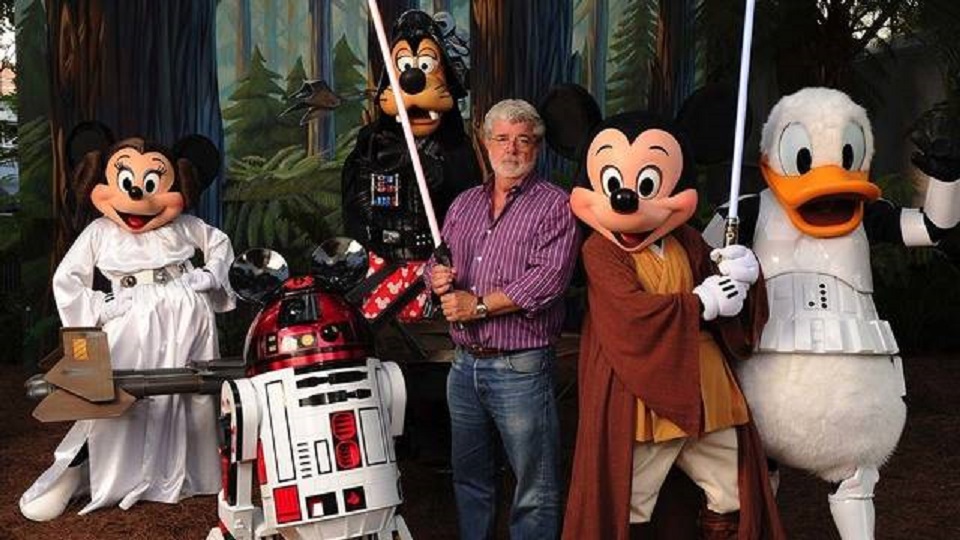
Credit: Disney
The Lucas in “Lucasfilm” wanted to retire, but worried about the staff whose livelihoods and careers depending on him. So much so, he told them to start developing ideas for a new trilogy of Star Wars films featuring the original trilogy cast members. Whether he was earnestly developing these stories or if this was just a negotiating tactic, Disney stepped in.
Paying Lucas a hefty $4 billion for his life’s work, the House of Mouse announced that they would be going ahead with the plan to bring back Star Wars, along with the original characters. They tapped J.J. Abrams to direct, a man whose love of Star Wars was a big part of getting him into filmmaking. The notoriously secretive director kept a tight lid on the production, arguably only increasing the hype around the project. The impact of Star Wars returning was going to be big, but the marketing push increased curiosity to a fever pitch.
The Return of the Filoni
For the angry fan contingent, Disney represented the beginning of the end. Due to the utter lack of coherence through the various expanded universe projects, Disney dumped it all. Well, they labeled it “Star Wars Legends,” but assembled a story group to ensure that all Star Wars stories fit and make sense in the universe they all shared.
Also angering fans was that Disney and the Cartoon Network are competitors, so the deal meant the premature end of The Clone Wars series. So, all eyes were on Disney’s first official Star Wars release. What they got was a new animated series from Filoni and his team following a group of rebels in the years before Luke met Leia. This was appropriate, as Filoni's close relationship with Lucas helped bridge the two eras.

Credit: Lucasfilm
When it premiered, some fans and critics griped that (even though it is a cartoon for children) the show was too childish. There was criticism aimed at the young Jedi protagonist as well. Eventually, everyone realized these were the same criticisms made about his last show. Over the four-season run of this series, everyone got turned around.
They used characters from The Clone Wars, wrapping up some of those stories for fans. They also used characters from the films, such as Lando Calrissian or Yoda. Both of them voiced by the actors who played them in the films, Billy Dee Williams and Frank Oz. They told brave new stories, digging into the mythology of the Force and the Jedi. Finally, they also successfully integrated with the films being released. Forrest Whittaker reprised the role he played in Rogue One on the show. For a first project for Disney, Rebels went perfectly.
The Fandom Awakens
Of course, the big show is always at the movies. When The Force Awakens hit theaters in December of 2016, hype rose higher than during the run-up to Phantom Menace. With sparse footage and judicious use of John Williams’s iconic score, fans were ready for this film. What Abrams delivered was just what the franchise needed. Loosely following the structure of both A New Hope and Phantom Menace, Abrams delivered a new story that still felt like the Star Wars we already know. At most, the film faced criticism that it played things too safely. Fans and critics alike wanted Lucasfilm to take risks, even though this was the crime they put George Lucas on trial for. It should have worked perfectly, but somehow it didn’t.
(Not) The Last Controversial Star Wars Movie
When Rian Johnson’s The Last Jedi debuted two years later, fans were even more eager. Luke Skywalker’s appearance in the last film was just a single, silent scene. Fans wanted to see their hero finally being the wise mentor. Instead what they got was a risk-taking film that tried to subvert expectations and, like Empire Strikes Back, deliver a meditation on failure. Of course, the backlash got most of the coverage like it usually does. Yet, this film is not nearly as divisive as some might believe. The impact of Star Wars, particularly this film, is that it tells the boldest story in the saga to date.
Yes, the film does feature one of the more heavy-handed discussion of space-politics (which of course reflects real politics). Still, it’s nothing more than a precursor to a space-horse chase. Like both middle chapters before it, The Last Jedi is a bit of a bummer. The good guys are not in good shape. And unlike the other trilogies, this film is all we have until December of 2019 when Abrams closes out the saga with Episode 9. Some folks can’t like a middle chapter until they know how it all shakes out. Like with the prequels, time will be kind to this movie.
The Impact of Star Wars: The Anthology Films
It’s unclear, but Episode 9 is possibly the last Star Wars movie about Skywalkers. For Lucas, the story of this family was central to what interested him about this universe. For everyone else? Well, there is a whole galaxy of interesting things out there. After The Last Jedi, Johnson signed up to develop his own trilogy of films unconnected from anything that came before it. Game of Thrones masterminds David Benihoff and D.B. Weiss are also developing a series of films (or maybe just a series). To ready audiences for this, Lucasfilm has released two anthology films, though they’ve not strayed far from the saga.
2017’s Rogue One told a story that had been visited before in the expanded universe, who stole the plans to the original Death Star. Directed by Gareth Edwards, the film surprised fans and critics, mostly because of the ending. With this movie Lucasfilm showed that they are not trying to turn everything into a franchise. The other anthology film, about a young Han Solo, didn’t break the box office, but it is a fun movie. In fact, if you’ve never seen Star Wars at all, Solo is the movie you should watch first.
The Impact of Star Wars: The Expanded Universe, Stronger Than Ever
The advantage of the Lucasfilm Story Group is that every story matters in the grand scheme of things. It’s hard to believe that even George Lucas imagined how meticulously people would pore over the films and the series to better understand the mythology of it all. Ensuring that there is a consistency across all of the various media Star Wars uses for storytelling treats every video game, comic book, or short story as a kind of scripture.
The whims of the Force, the temptation of the Dark Side, and other details are an allegory to real-world concerns. Is there a God? Are we subject to Fate? What does it mean to be a good person? It may seem strange to wonder how a video game mission can make a philosophical statement about non-violence. But not for Star Wars. Because this is a franchise designed to tackle these big questions, any medium could deliver a classic story. Star Wars is now a franchise to grow up with in a very deliberate way.
The Impact of Star Wars: Newest Efforts for Kids
Much of Star Wars, while exciting to children, is a little much for them. There is death, characters are routinely maimed, and so on. It’s not graphic violence, but it might be too much for some parents. A number of recent releases from Lucasfilm are designed for younger audiences. The animated series Forces of Destiny is a series of animated shorts for younger viewers. Unlike the 1980s cartoons for kids Droids and Ewoks, these stories are both canon and age-appropriate. The latest cartoon from Lucasfilm, titled Star Wars Resistance, is also aimed at younger viewers.
The people who are making Star Wars movies today all grew up loving the original Star Wars movies. With this experience, they are tailor-making projects for families, for younger viewers, and eventually just for adults. Star Wars will persist as a cultural force because new fans are going to have a “Star Wars” experience for every age. If the quality of the stories they tell stays of a consistent quality, it could stand the cultural test of time. Star Wars characters may join the pantheon occupied by Ulysses, Beowulf, or the foul-mouthed friar in the Canterbury Tales. It may be set a long, long time ago, but Star Wars stories are timeless.
The Impact of Star Wars: The Great Galactic Community
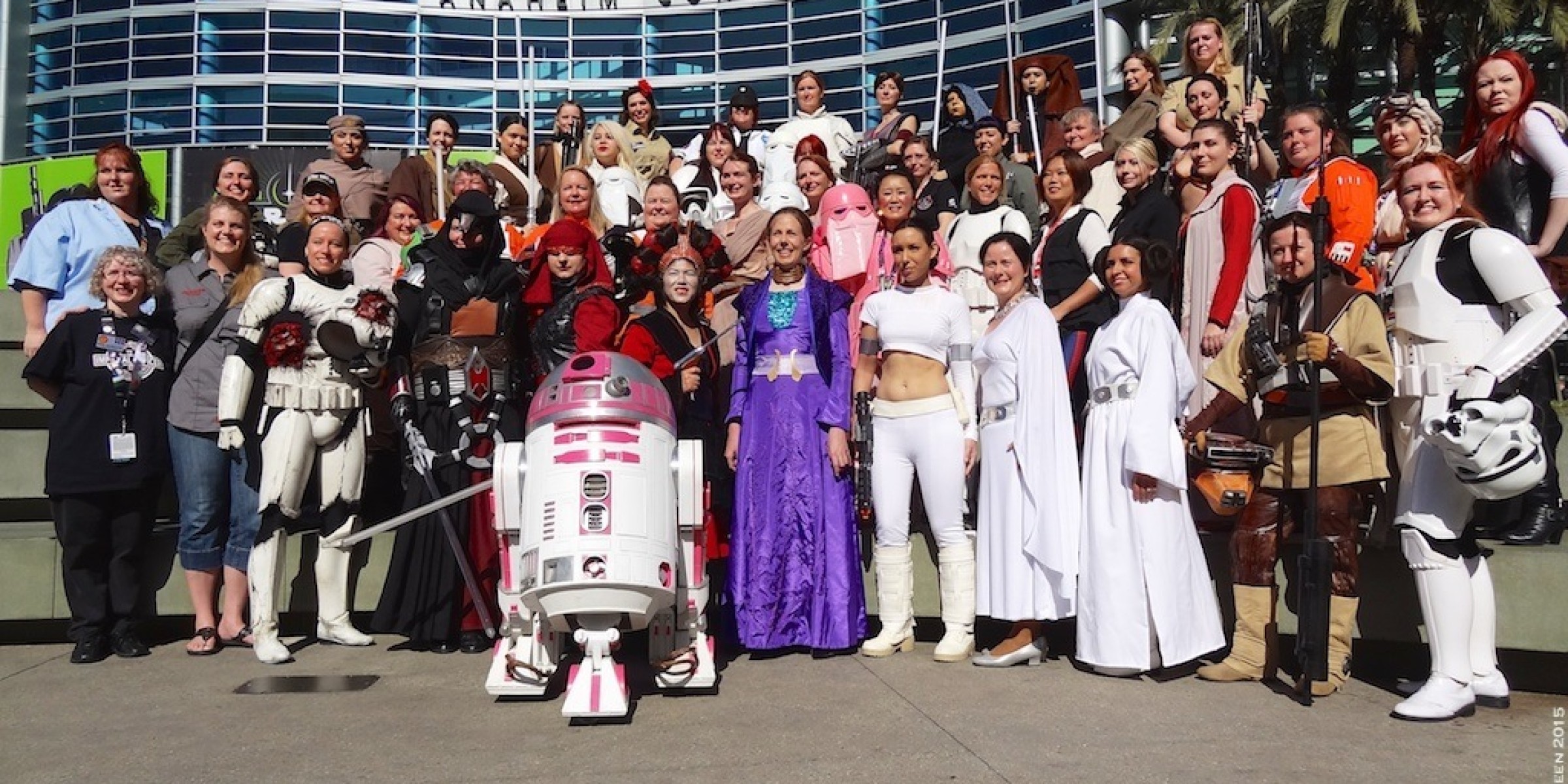
Credit: StarWars.com
Much of the attention given to Star Wars fans today is negative. It seems strange, but many long for the days when Star Wars fans were seen as affable nerds like in the classic Conan O’Brien clip above. Yet, despite stories about fans cutting out all the female characters or harassing the stars on social media, this is not who Star Wars superfans are. To highlight this, the Star Wars YouTube channel developed the Our Star Wars Stories series. People talk about how their personal relationship with this silly little space fantasy changed their lives. Learn about a droid-making father who lost his daughter to illness or the founder of the largest Star Wars cosplaying organization. Or, you can see first hand at Star Wars Celebration 2019 in Chicago.
Like Comic-Con but just for Star Wars, Celebration is a time for fans, creators, and vendors to all get together and share their love of Star Wars. There is great cosplay, convention exclusive collectibles, and exclusive panels including one that will likely be our first look at Episode 9. Even if you can’t make it to the convention, you can likely follow along as the Star Wars social team live streams the event for those of us stuck out here in hyperspace.
The Impact of Star Wars and What Lies Ahead
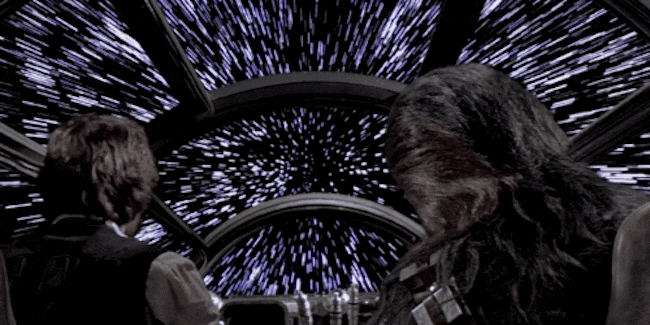
With the box office underperformance of Solo and the crowded slate of movies for Disney already, it appears that Lucasfilm will not be putting out a Star Wars movie every year. This might ultimately be a good thing. A new Star Wars movie should feel like a treat, not an ugly sweater your elderly aunt sends you for Christmas. There will be more movies, but rather than rush to get the out each year, filmmakers can take their time. Also, it gives other media a chance to shine, especially since Disney is launching its own streaming service to compete with Netflix, Amazon, and Hulu (which it actually owns a stake in).
This still-untitled service will house not one but two hotly-awaited Star Wars titles. First is the return of The Clone Wars. It’s unclear if this will be a multi-season effort or if it’s just a one-off so Filoni and company can wrap up the story as originally envisioned. The second project is the live-action series executive produced by Jon Favreau called The Mandalorian. Set between the original and sequel trilogies, this is the first foray into live-action for the small screen in the Star Wars universe.
Interactive media will be a part of the future of Star Wars, too. Not only virtual reality games, such as Vader Immortal written by David. S. Goyer. But Disney World will soon have an immersive Star Wars experience that tells an original story!
Star Wars transcends entertainment and pop culture to become a literal mythology for modern times.
Originally the dream of a quirky filmmaker that wanted to tell positive stories about big thematic ideas, Star Wars is something more than just a brand. The characters, the stories, the lived-in universe, all of it appeals to the dreamer inside all of us. Lucas and his successors know how to tap into that. What made Star Wars unique at the start is how fans take it and make it their own. From the Hardware Wars parody films of the 1980s to the sleek CGI-laden fan films of today, Star Wars inspires people to create. The kids making up stories with the action figures grow into adults animated, acting in, or writing the next stories. It’s a self-sustaining cycle. The only hope is that it’s one that continues to encourage creativity and community.
Either way, Star Wars is a part of the very fabric of American culture and culture across the world. What do you think? What has been your experience with Star Wars? Do you agree it’s as much a part of mythological culture as the Greek pantheon? Share your thoughts, experiences, and Star Wars stories in the comments below. Don’t forget to share the article on social media for your friends!
Related Article: 20 Best Star Wars Accessories Super Fans Will Love
